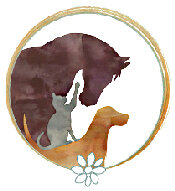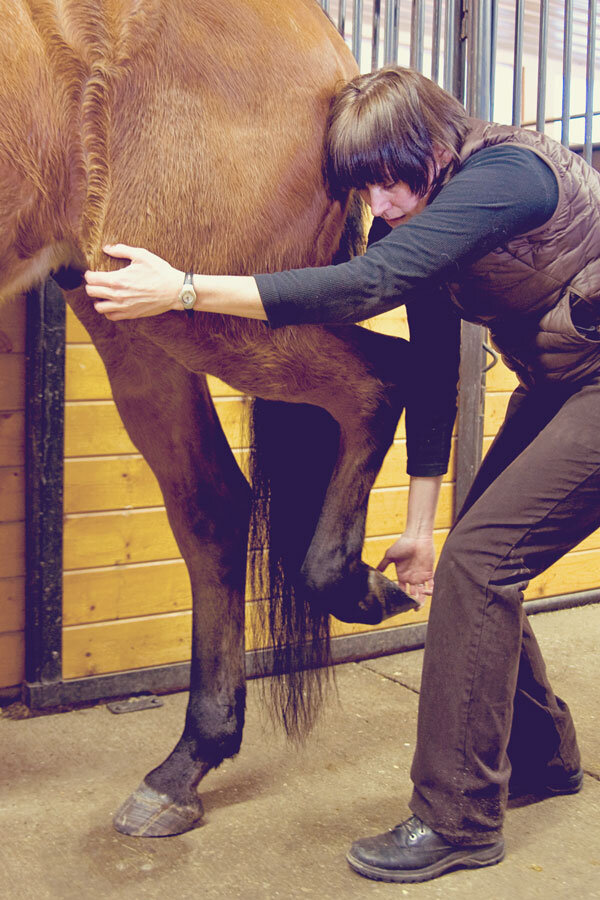
HORSES

After years of exploring different therapies, Dr. Taylor has found osteopathy to be the quickest route to treating the root cause of many musculoskeletal conditions and other health issues. Treatment is effective and efficient, requiring fewer treatments that last much longer than other therapies.
The Equine Athlete
Dr. Taylor’s equine patients include the spectrum from local and international competition sport horses to the pleasure horse to the retired senior horse living out his days on pasture.
Equine athletes compete in in: jumping, dressage, three day eventing, endurance, competitive trail ride, polocrosse, barrel racing, reining, working cow horse, cutting, cattle penning and driving.

The goal is to determine WHERE motion is lost, and then discover WHY.
Problems in Horses that Osteopathy can Help or Resolve:
Difficulty fully engaging hind end, poor impulsion, difficulty with collection
Trouble with one canter lead
Resistance to bend in one direction
Lameness or stiffness
Shifting lameness
Back or neck pain
Asymmetry in the body (movement, posture or muscling)
Poor topline (muscle imbalance)
Arthritis
Changes in mobility after trauma or surgery
Soft Tissue conditions (inflammation or strain of tendons, ligaments, muscles)
Behavioural issues (head tossing, aversion to touch, brushing, saddling, girthiness)
Riding issues (refusing jumps, aversion to leg pressure, crow hopping, bucking)
Swellings in body areas (sheath, hind legs stocking up, underside of belly)
Pre-performance optimization and injury prevention
Temporary/poor response to chiropractic, acupuncture, massage or physiotherapy/rehab treatments

DIAGNOSIS
An evaluation is done by motion testing all the joints for normal range of motion —spine, limbs, ribs and jaw—and motion testing ‘springing’ the body wall in the abdominal and thoracic areas to determine excessive tension in the organs underneath.
The biggest clue to organ involvement is when 3 spinal vertebrae in a row are fixated or rotated to one side.
MECHANICAL
50% of joint restrictions are coming from local mechanical issues and therefore will respond well to local manipulation - chiropractic, etc.
*from trauma, overuse etc.
A joint is restricted for 2 possible reasons (can be one or both):
Visceral / Organ
50% of joint restrictions are caused by nerve changes coming from organ issues (increased tension around organs/fascia or altered organ function) therefore these joint restrictions will NOT respond to local manipulations or adjustments.

please note
Some organs require treatment that does not involve an osteopathic approach but a conventional veterinary approach such as ulcer treatment, deworming or possible other holistic approaches —herbal medicine, acupuncture or homeopathy.
“Common organ issues in horses leading to joint restrictions or fixations:”
-
One pelvic bone rotated with sacrum (sacroiliac joint restricted) and 3 lumbar vertebrae fixated to one side. **All geldings have this!
-
LEFT shoulder blade restricted, thoracic vertebrae 12 – 14 fixated.
-
LEFT shoulder blade restricted, thoracic vertebrae 13 - 15 fixated.
-
RIGHT shoulder blade restricted, thoracic vertebrae 7 - 9 fixated to one side, some mid-lower ribs can be restricted.
-
One pelvic bone rotated with sacrum (sacroiliac joint restricted) and 3 lumbar vertebrae fixated (L 1 - 3). One in 3 mares has this.
-
RIGHT pelvic bone rotated with sacrum (RIGHT sacroiliac joint restricted) and 3 last lumbars fixated (L 4 - 6).
-
AKA Verminous or Worm aneurysm = migration of large strongyle larvae to wall of mesenteric artery. 13 vertebrae fixated in a row RIGHT side of back. READ MORE

The 3 Pillars of OSTEOPATHY
Effective treatment is a blending or continuum of these 3 approaches.
Find out what to expect during an equine treatment with Dr. Taylor.







